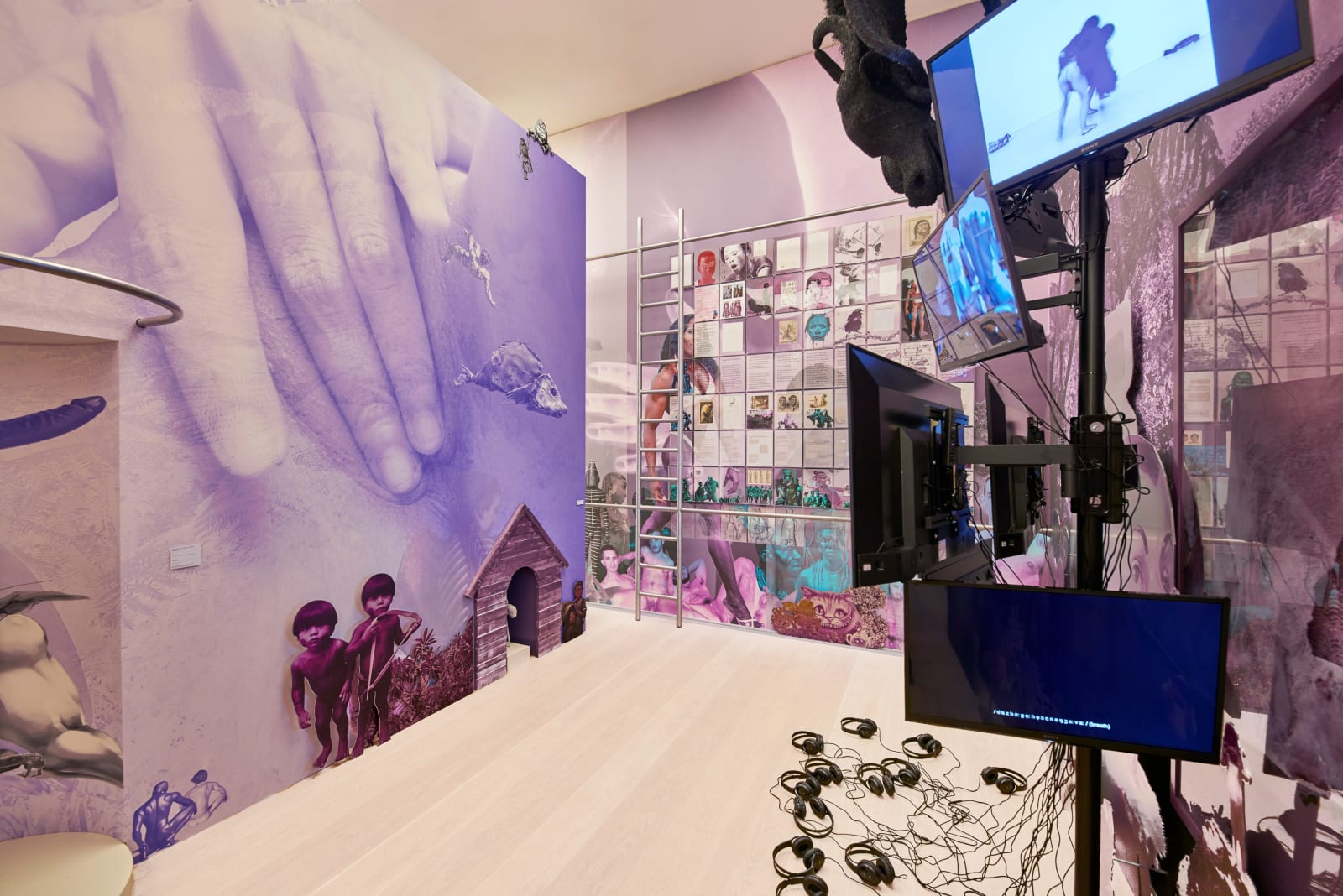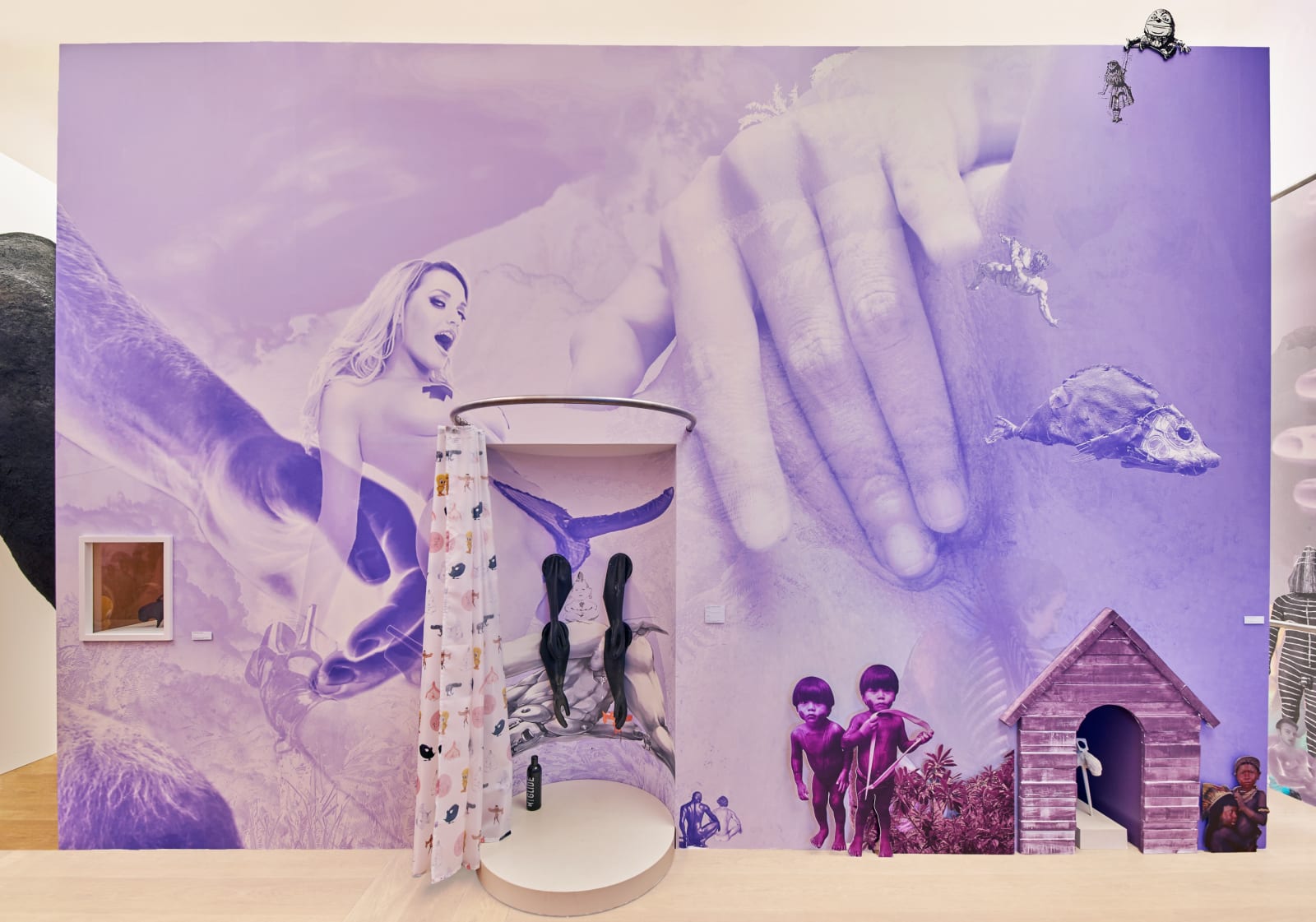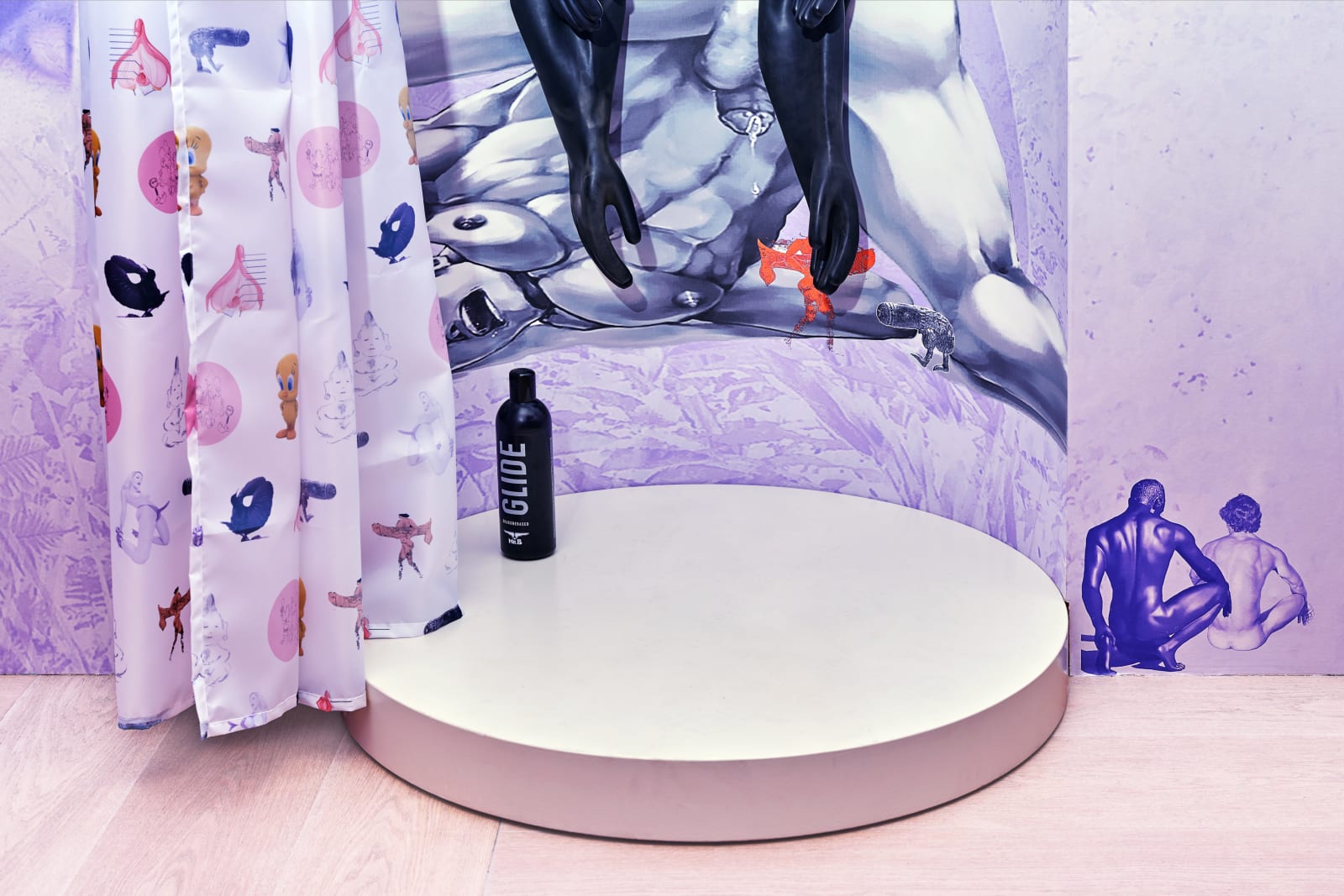Galerie du Monde is thrilled to announce prominent German artist Michael Müller’s nomination for the 46th Böttcherstraße Art Prize. The Böttcherstraße Art Prize is among the most recognized awards for contemporary art in Germany. It is awarded to visual artists living in the German-speaking regions for an outstanding contribution to current contemporary art. Michael Müller is one of the ten artists shortlisted this year, and their works are exhibited at the Kunsthalle Bremen in Germany from July 28 to September 30. Michael Müller’s exhibition “Stripping the Force” opened on July 27 with eight dancers performing “Praxis, Probe und Produktion von Wirkungen und Wirklichkeiten” (“Praxis, Rehearsal, and Production of Effects and Realities”).
“Stripping the Force” consists of two parts, separated from each other by a wall. Formally, these parts are quite distinct from each other, but in terms of their themes and motives they are closely connected. The frontal part of the exhibition is set in a simple, ethnographic style and deals with an ancient, presumably extinct civilization: the “Himmelheber” (“Sky-Bearers”). Müller explained the Himmelheber has already been extinct but also revived several times, always chaperoned by a companion, Tarung and a hermaphrodite priesthood that is meant to connect to the Dram, an “In-Between” realm where the Gods and ancestors are located between life and death.
The people of the Himmelheber have bequeathed objects of peculiar beauty, some of which are shown in the frontal part of the exhibition – accompanied by a wall text and an audio guide. The objects are fully coated with a coarse, dark paste that consists of blood, bone meal, hair, urine and sperm (materials that are derived – and secreted – from the vulnerable, “open” body). Presumably, the paste had a ritual function and was (or still is) used by priests during religious acts. Aside from these relics, the first part is dedicated to some exemplary rites of the Himmelheber, which the audio guide (also a work of Müller’s) explains. How and when do we die? How will we be remembered? Who will accompany us through the act of dying? Which shape does our life take? The Himmelheber offers extraordinary answers to some questions that human beings have been dealing with for millennia.
The second part of the exhibition presents a somewhat “remix” of the first part and contains an exuberant contemporary flood of images. Several display stands, costumes and other items of clothing are on view in front of a purple-colored wallpaper – mixed in with films, drawings, texts, prints, collages and objects. On several screens one can see the rehearsal for the two and a half hour-long performance “Praxis, Probe und Produktion von Wirkungen und Wirklichkeiten” that takes place within the space on the evening of the opening, employing some of the works of the exhibition in a performative way (a remote-controlled animal, a relic of the Himmelheber, among other things). The exhibition pushes this diversity of artworks to the extreme, it quotes from clichés and develops mutations and metastases in an eccentric and hybrid fashion. The “topic” of the exhibition (the people of the Himmelheber) is varied, fractured and fanned out – like a ray of light that is broken into a kaleidoscopic range of colors in a rainy sky. The possible and the real are progressively rendered into indistinguishable forms. What is one’s own converges with the foreign other. And the longing for distant places is turned back onto itself. Although the works might manifest as ironic, associative and strangely uninhibited, ultimately, they turn out to be one thing above all: deeply human.





